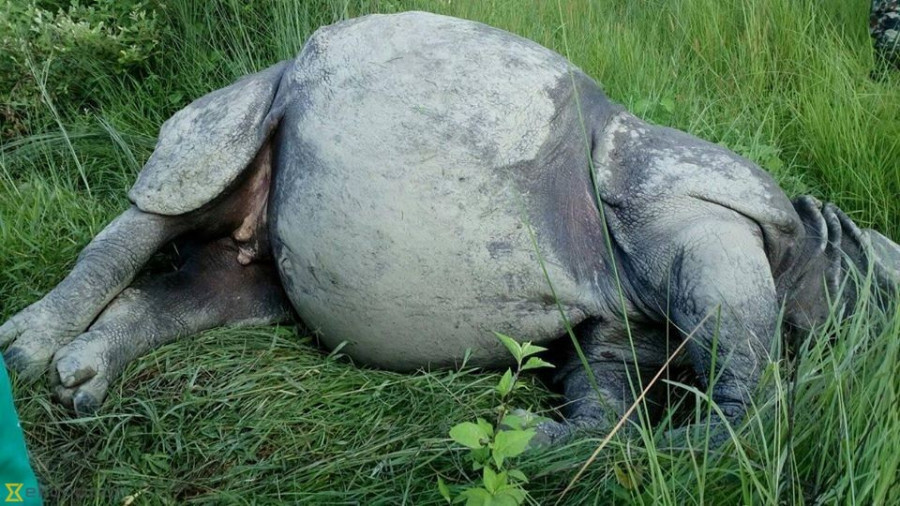Climate & Environment
Chitwan National Park investigates rising deaths of rhinos
Committee investigating the deaths will also recommend ways to minimise mortality in the days to come.
Chandan Kumar Mandal
As unprecedented deaths of one-horned rhinos in Chitwan National Park continue even this fiscal year, authorities have commissioned a study to look into the reasons behind such deaths.
A three-member expert committee led by Rishi Ranabhat, assistant conservation officer at the park, will also recommend scientific measures to address the problem, said Ananath Baral, chief conservation officer at the park.
“Natural deaths of rhinos in Chitwan have been high in recent years, including the ongoing fiscal year. They have been dying due to various reasons although these are natural causes,” Ananath Baral, chief conservation officer with Chitwan National Park told the Post. “We want to investigate these deaths and come up with plans to minimise them.”
The committee, which includes Baburam Lamichhane, chief of Biodiversity Conservation Centre, Sauraha, under the National Trust for Nature Conservation (NTNC) and veterinarian Dr Amir Sadaula of NTNC as members, will recommend measures to disperse the rhino population of the park which has in recent times concentrated in the western parts of the protected area.
Authorities at the Chitwan National Park, home to the country’s largest rhino population of 605, have been worried following the sudden rise in deaths of the vulnerable species. While the country has mostly managed to control illegal poaching of one-horned rhinos—hunted for their horns—natural deaths have soared in the last few years.
In the 2016-17 fiscal year, 25 rhinos were reported dead, including one which was killed by poachers. Twenty-six rhinos died in the following fiscal year, 43 in 2018-19, and 26 in 2019-20. This year, nine rhinos have already died due to natural causes. One rhino was killed in the second week of September—a poaching incident reported after 1,249 days of zero poaching.
The numbers look daunting as the number of rhino deaths due to natural causes would be around 15 annually before it picked up four years ago, government data shows.
Most of the rhinos that died in the past four years have died due to monsoon related incidents, according to Baral.
“Some were swept by the flood while grazing on the banks of the rivers. Others drowned in the swamp,” said Baral. “As this year the monsoon was longer and the water level in the river was higher for a long time, rhinos might have also miscalculated their crossing point and drowned. One succumbed to the injury it suffered during a fight with another rhino.”
The study team has concluded its visit to rhino habitats inside the park, according to Baral. Now, the park is awaiting its final report.
“We have been informed that fieldwork is completed,” said Baral. “We are expecting a report within a month, soon after Tihar.”
Table
Fiscal Year | Rhino deaths in Chitwan |
2016-17 | 25 |
2017-18 | 26 |
2018-19 | 43 |
2019-20 | 26 |
2020-21 | 9 |
Source: Chitwan National Park




 7.12°C Kathmandu
7.12°C Kathmandu











